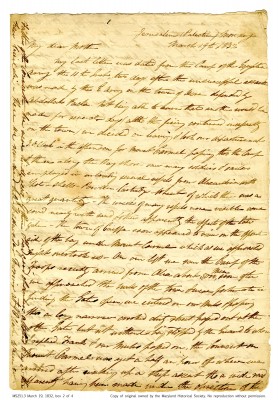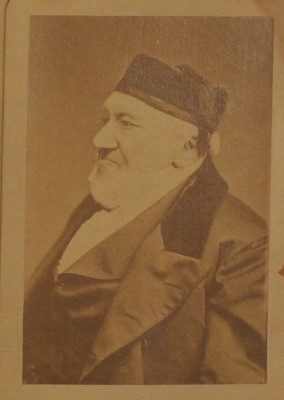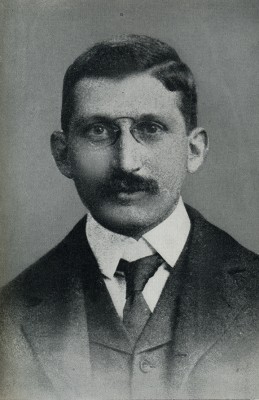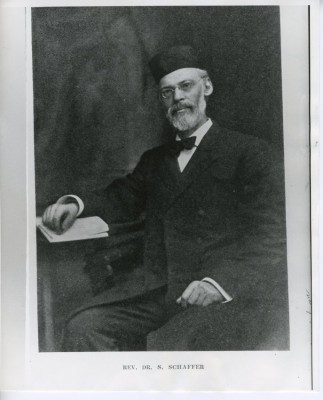Chronology: Maryland and Israel Part 1, 1830 to 1900

Compiled by Avi Y. Decter and Dr. Deborah R. Weiner. Originally published in Generations 2007-2008: Maryland and Israel.
The term “Zionism” was coined only in 1890, but for 2,000 years Jews throughout the world have yearned for a return to their ancient home in the Land of Israel. Prayers and rituals refer to Israel’s winds, dew, and rain, the fertility of its soil, and the beauty of its produce. The longing for return and redemption has helped to sustain the Jewish people. In the modern era, longing was transformed into an international movement to rebuild a Jewish homeland in Israel as a refuge and as a center for Jewish renewal.
In this movement, Maryland has played an important role. This timeline, based on research conducted by Barry Kessler for the Museum’s Bridges to Zion exhibition in 1998, calls out some of the many events and people who have participated in the Zionist project from the early nineteenth century to the present day.
1832

Baltimorean Mendes I. Cohen is one of the first American citizens to visit Palestine as part of his six-year tour of Europe and the Middle East. His descriptions of life there, depicted in letters to his mothers and brothers, offer a rare glimpse of Palestine’s Jewish community through the eyes of an American Jew.
1840s
Jehiel Cohen (in 1847) and Aaron Selig (in 1849) visit Baltimore, appealing for Maryland Jews to aid the poor, the infirm, the elderly, and the scholars of Israel. Messengers and letters from orphanages, academies, and other institutions serving the Jews of Palestine represent a tradition of charity that dates back to ancient times, founded on the belief that Jews in the Land of Israel contribute to the spiritual salvation of the Jewish people by their study of holy texts and their presence in the holy cities.
1870

Sir Moses Montefiore (1784-1885), a prominent English philanthropist and Jewish communal leader, donates a Torah to Congregation Shearith Israel in recognition of the Congregation’s support for the Jewish residents of Palestine. In 1879, Montefiore gives a second Torah to Congregation Chizuk Amuno.
1888
Young, intellectual Russian Jewish immigrants form the Isaac Bar Levinsohn Hebrew Literary Society to foster cultural activity among Baltimore’s East European Jewish immigrants. With the support of Rabbi Benjamin Szold and his daughter Henrietta (1860-1945), the Society promotes a variety of cultural and educational activities and serves as an early forum for the discussion of Zionist ideas. The following year, under the leadership of its president, Solomon Baroway, the Society opens the Russian Night School in East Baltimore, one of the nation’s first night schools for immigrants. Henrietta Szold serves as superintendent.
1889
“The very learned, although very young” Rabbi Simon Isaac Halevi Finkelstein founds a branch of Hovevei Zion (Lovers of Zion), Baltimore’s first Zionist organization. In its first year, the organization raises $234.58, of which $48.76 is sent to Palestine, the rest being used for Zionist propaganda in Baltimore. By 1899, a branch emerges in Hagerstown, as well.
1890

Cyrus Adler, a graduate of the Johns Hopkins Semitics Department, visits Palestine. On his return, he delivers a lecture, illustrated by stereopticon views, that enables Baltimore Jews to “see” the Holy Land, bringing Palestine close to home.
Also, Zev (Wolf) Schur publishes his Hebrew-language periodical, Ha-Pisgah, in which he espouses a strongly Zionist view as an antidote to Reform and assimilation. Schur continues to publish in Baltimore into 1892 and thereafter in Chicago.
1892
Shavei Zion [Returnees to Zion], an organization that promotes emigration to Palestine, holds a public meeting on 26 May, which is attended by more than 1,000 people. However, calls to return to Zion are undercut by the hardships of pioneer life in Palestine and the opportunities of America.
1894
Hevrat Zion (Zion Association) is founded at the Russian Night School with the ideal of rebuilding Palestine. The Association accepts members without regard to their “individual religious and social views.” The Association publishes Dr. Aaron Friedenwald’s lecture on “Lovers of Zion.” The next year, the Association brings to America the famous orator Zvi Hirsh Masliansky (1856-1943), who electrifies audiences with Zionist rhetoric.
1896

Henrietta Szold publishes “A Century of Jewish Thought,” advocating the revival of the Hebrew language and a return to the Land of Israel as remedies for a divided and de-natured Judaism.
1897

Shearith Israel’s Rabbi Schepsel Schaffer (1862-1933) is one of two official American delegates to attend the first World Zionist Congress in Basel, where he represents Baltimore’s Zion Association. The other American delegate is Adam Rosenberg of New York City, who was born in Baltimore. By 1910, Rabbi Schaffer presides over the five-member Council of Baltimore Zion Associations.
Dr. Aaron Friedenwald (1836-1902), an eminent Baltimore ophthalmologist, travels to Palestine with his wife, Bertha. After his return, he speaks in New York and Philadelphia on the regeneration of the land and of the Jewish spirit, predicting that the “center for Jewish thought” in Palestine would “radiate an influence” that would overturn generations of degradation and prejudice.
1899
The Federation of American Zionists holds its second national meeting in Baltimore. When the Federation was established in 1897, immediately after the first World Zionist Congress, Baltimore’s Zion Association and Ezrat Hovevei Zion were charter members. Among the 19 local delegates are Louis Levin, Solomon Baroway, Israel Fine, and Aaron Friedenwald.
